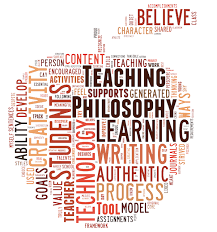As an educator, it is my goal to foster student engagement in the arts and humanities through technology and develop their ability to participate in interdisciplinary collaborations and conversations. In my classroom, I create a space where students feel safe trying, failing, and reattempting to navigate new ideas, tools, and methodologies. I can only lead by example, and, as such, I will need to be open with my students regarding my own attempts at tinkering.
I often construct my lessons around the idea of the classroom being a workshop. I encourage students to bring the assignments and projects they are working on and share what is working for them and what they need help with. When I worked for the IRIS Center for Digital Humanities at Southern Illinois University Edwardsville, I rotated through several different classes to teach students how to utilize various digital tools. I would first demonstrate how I would use the tool, show students what I had done in the past that caused problems, and walk them through how to make a final product. However, the most important element of this is ensuring that the end of each class had enough time to attempt to work with these tools on their own. I can walk around and address questions and concerns of individual students, and students could share what they have learned with their peers.
As I have shifted from that role into that of a Teaching Assistant for Michigan State University, I have had to adapt some of these approaches to more appropriately fit the recitation sections for large Integrative Studies in the Arts and Humanities courses. For these courses, I need to condense the information discussed in the biweekly lectures and transform it into a more hands-on activity for students. I always aim to provide a variety of different opportunities for students to engage with course material as a distinct shift from their passive reception of the material in the lecture hall.
In a recitation section, I try to shift student participation toward a more social constructivist approach to learning. This often involves group work as well as a lot of discussion. Group work may consist of anything from a presentation to joint artwork representing course concepts. In terms of discussion, I like to try different group dynamics by consistently making students move about the classroom and participate in everything from a one-on-one conversation to a discussion involving the whole class. However, I also try to create space for individuals in my classroom—I invite students to write a brief reflection at the beginning of class and list any questions they may want to ask but may not feel comfortable bringing up as part of a larger group discussion.
Regardless of course or subject area, I try to help my students take an applied approach to engaging with class concepts so that they can begin to comprehend how these concepts can relate to their life outside of the classroom.
